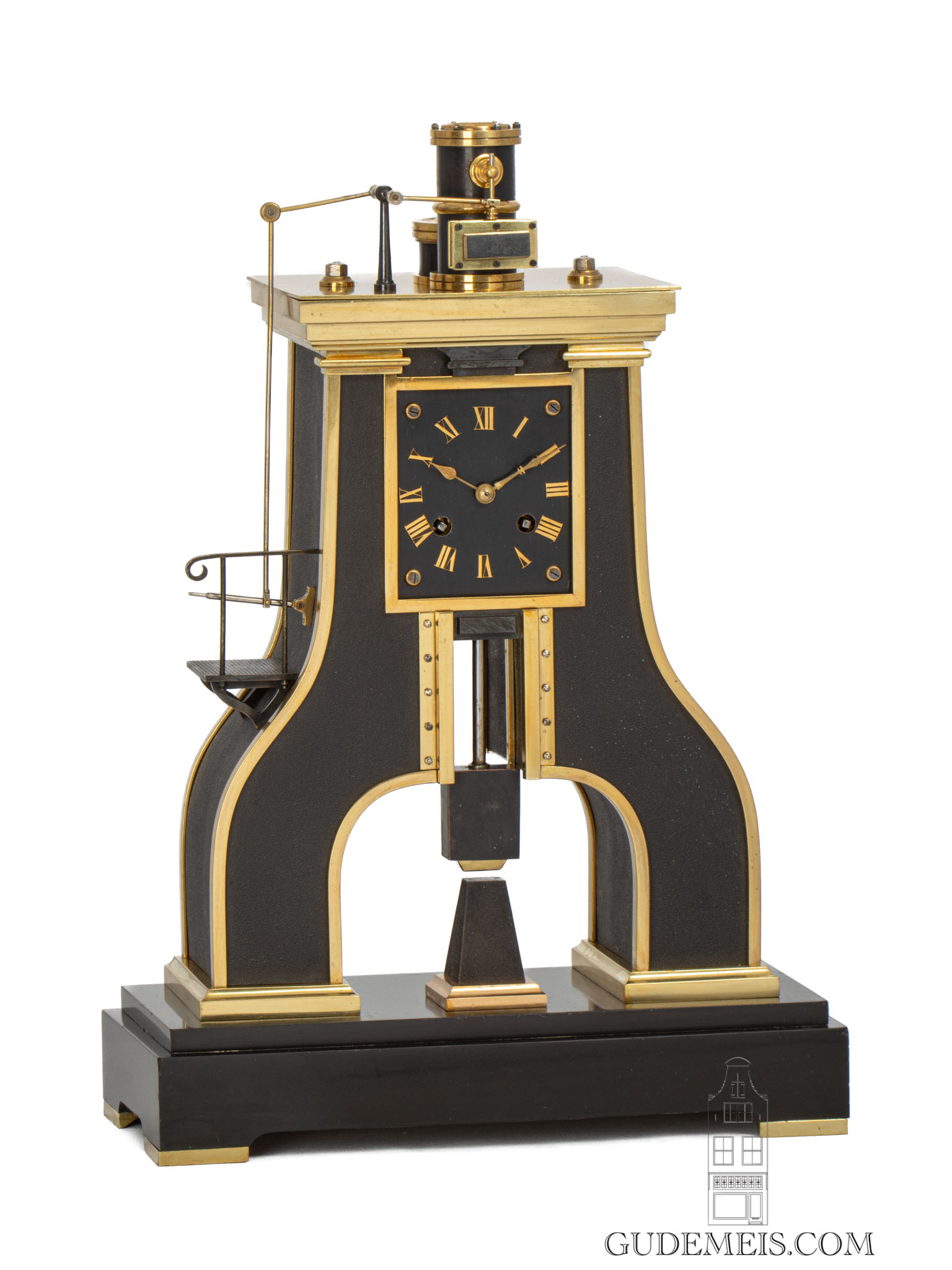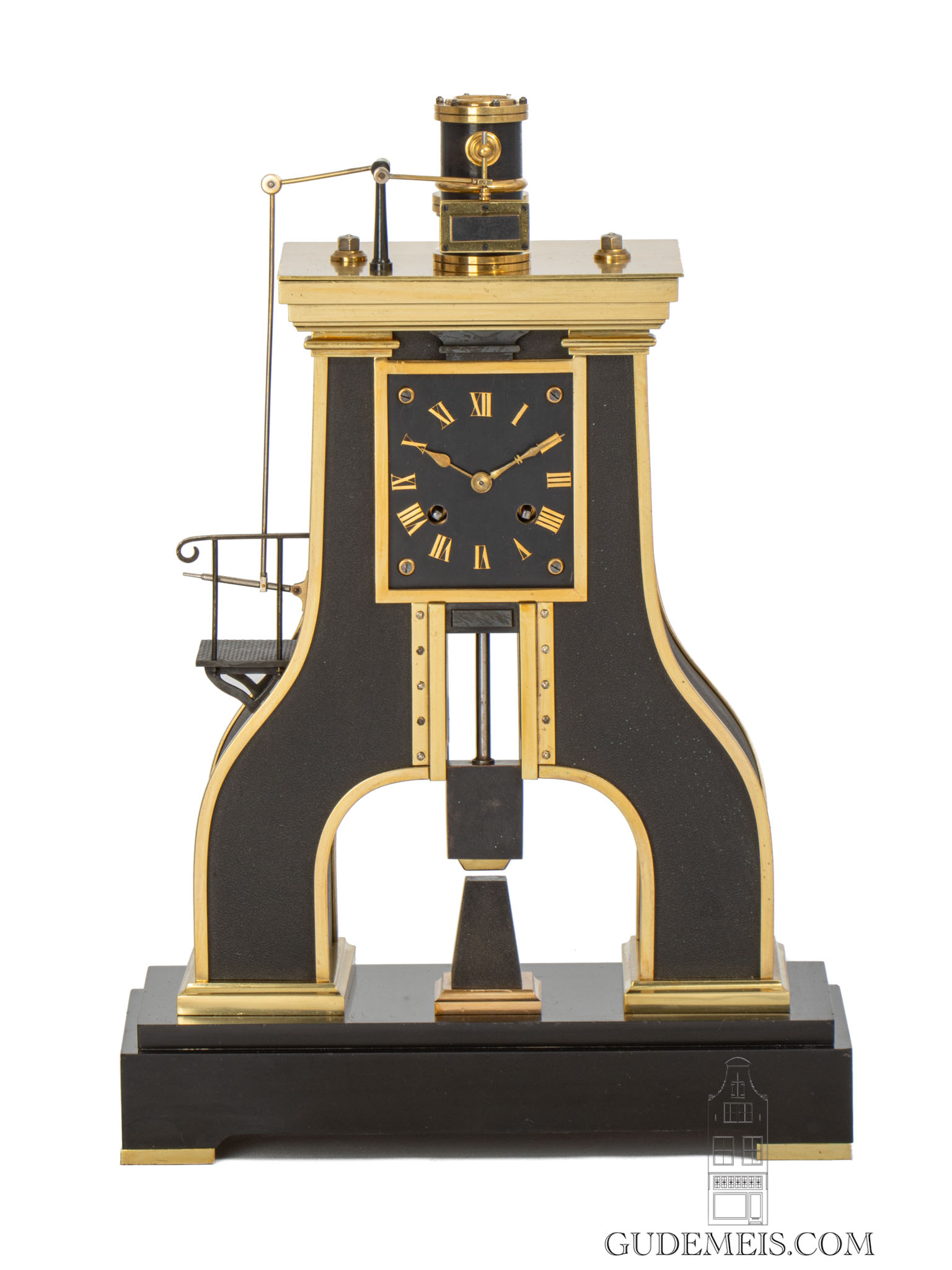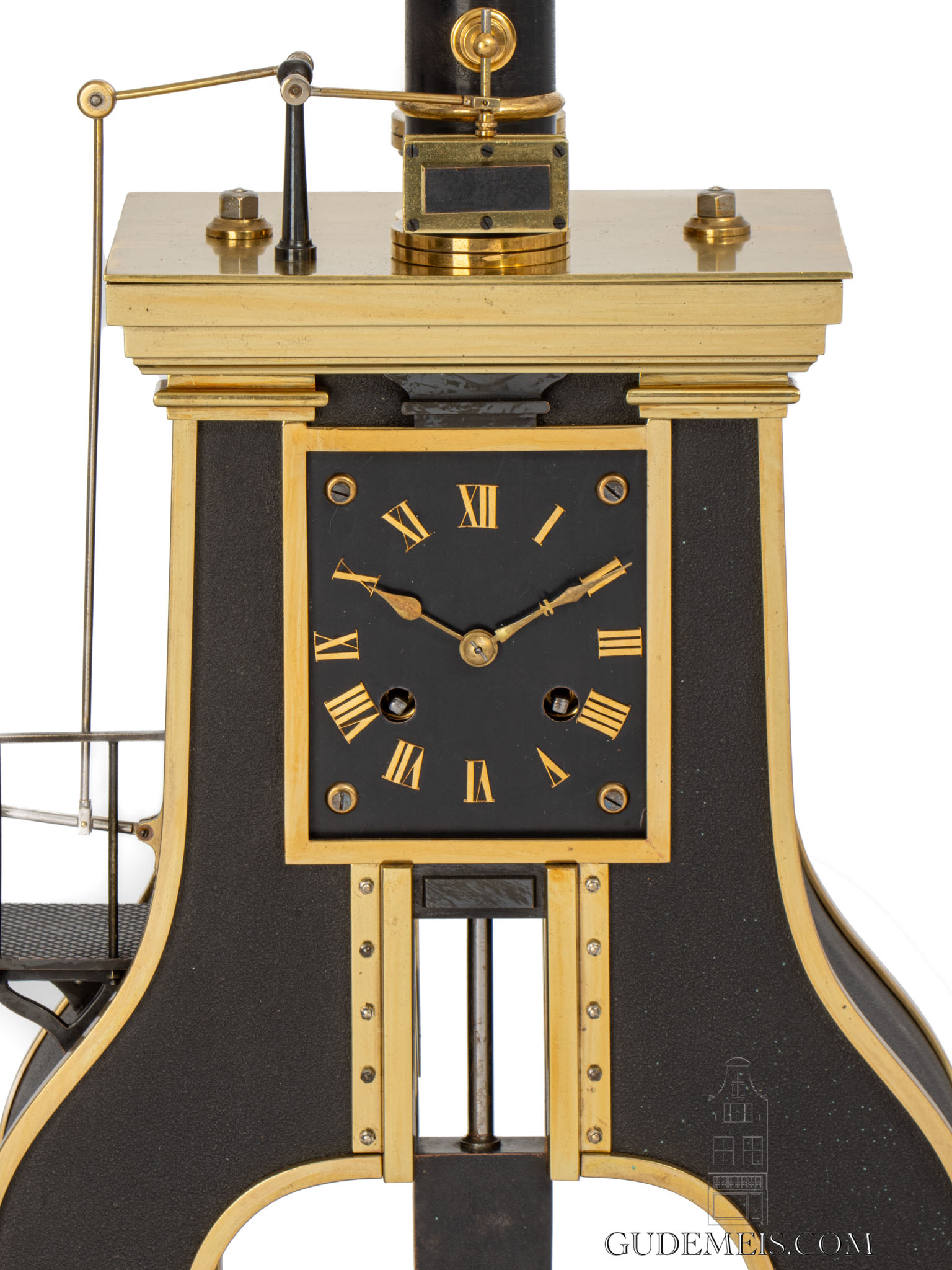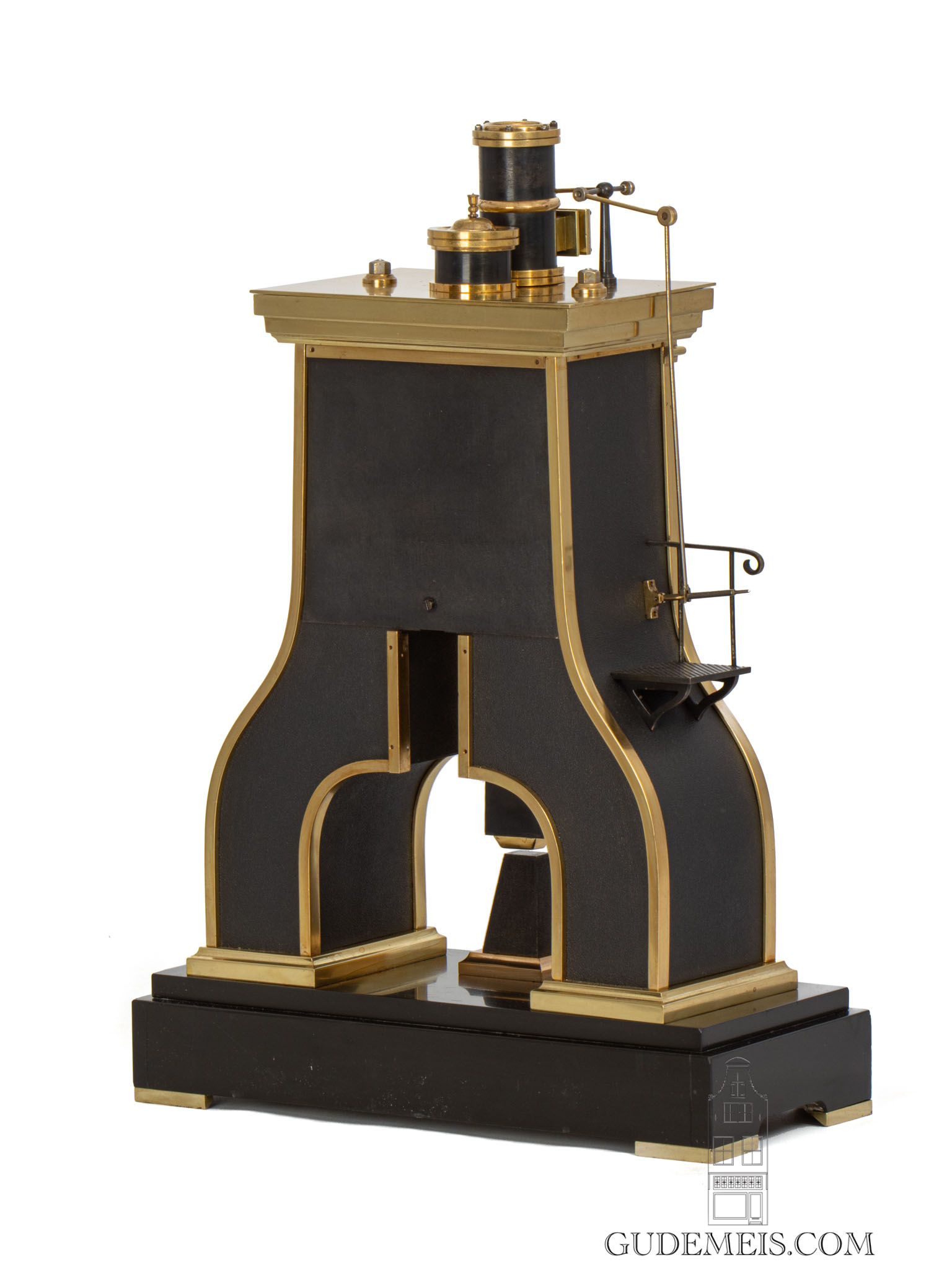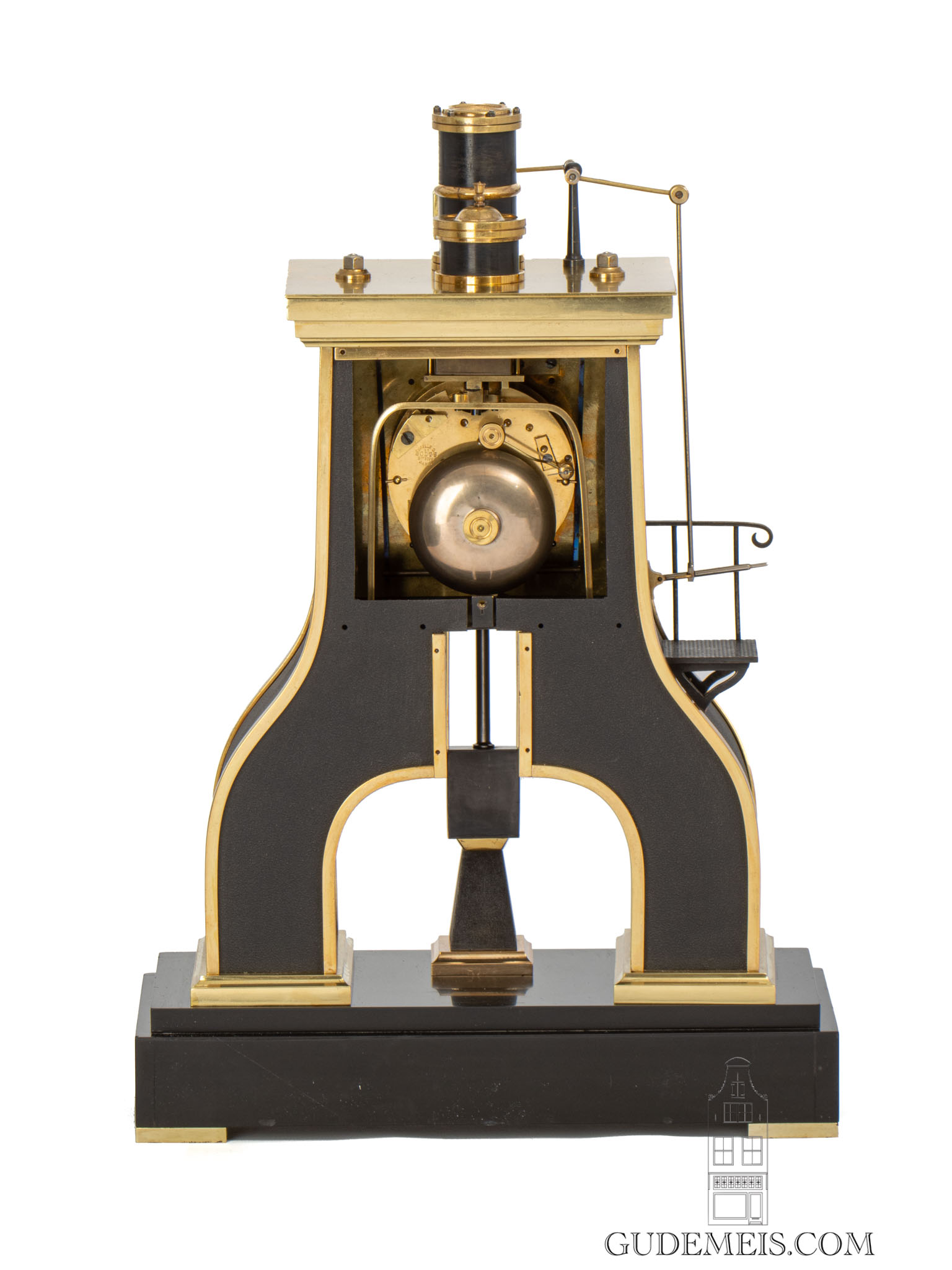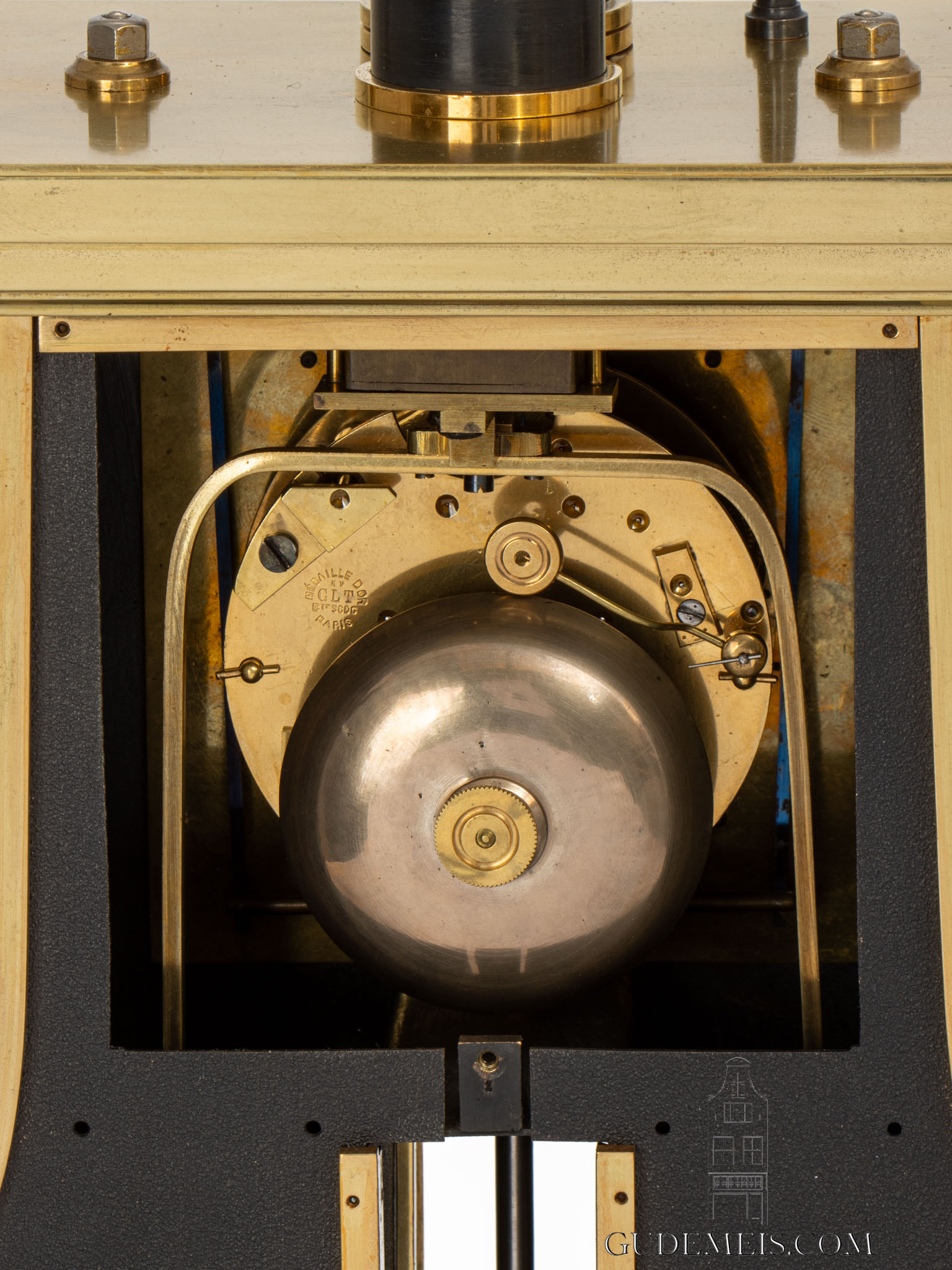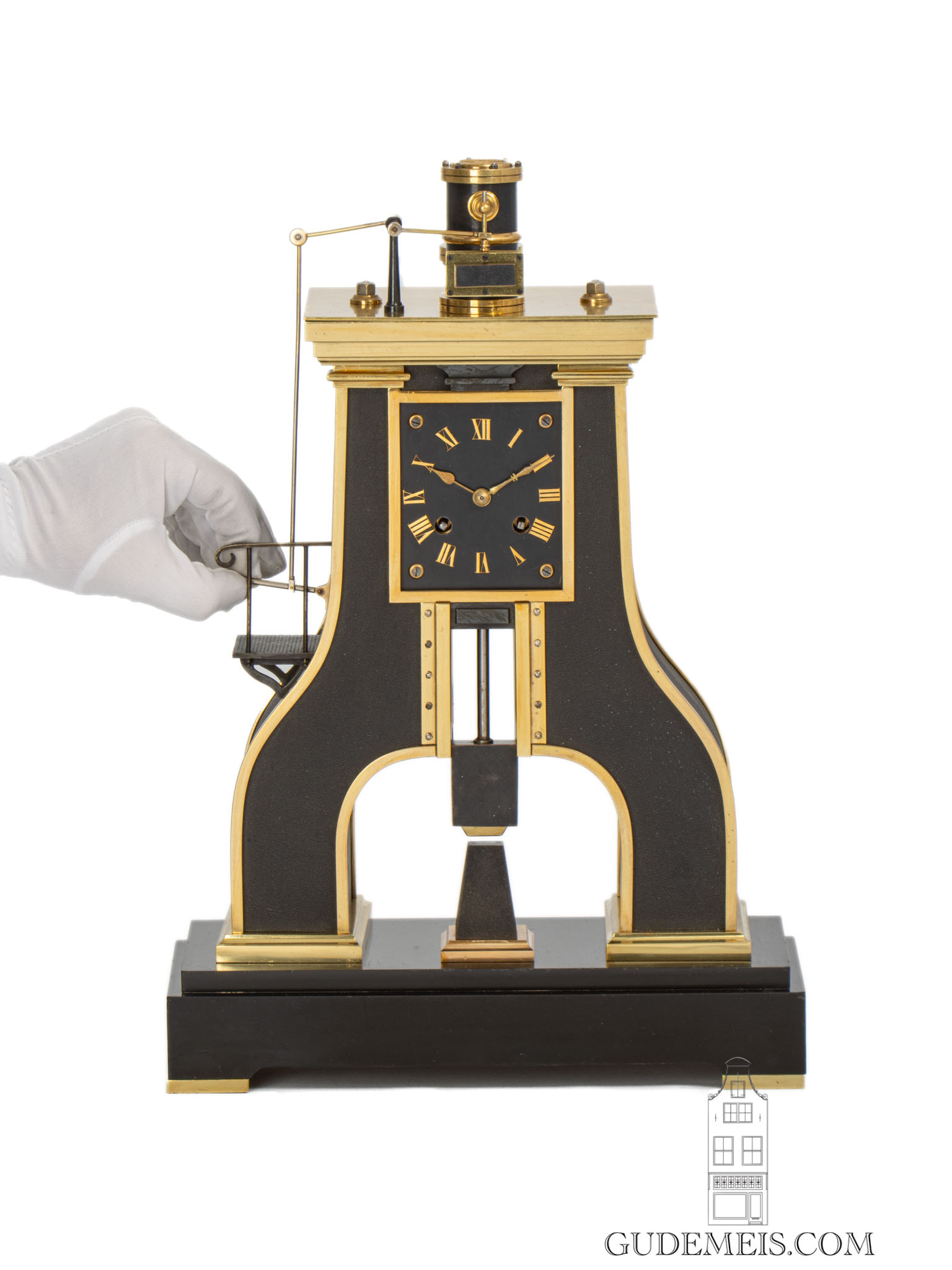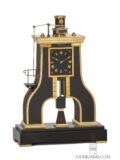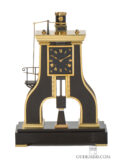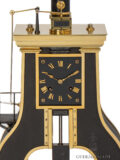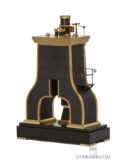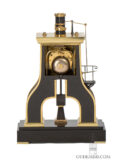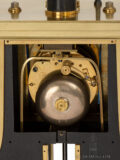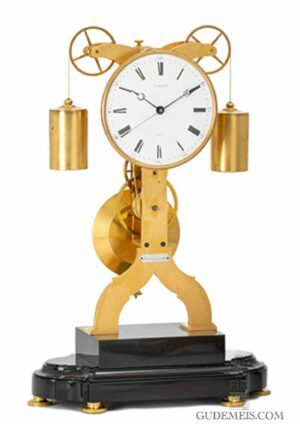A French patinated bronze industrial mantel clock ‘steam hammer’, Guilmet circa 1880
Description
Industrial clocks
In the last quarter of the 19th century, a small production of clocks emerged in France that we now refer to as industrial clocks. These are clocks whose design is related to the industrial revolution, shipping, and the innovations of that period. In addition to their attractive design, many of the models have a mechanism or automaton that adds to their appeal. This beautiful clock is made in the shape of a steam hammer. The heavy hammer was moved up and down by the steam engine. The craftsman held the part that needed work in different positions under the hammer to achieve the desired shape. Guilmet patented the system in which the swinging motion of a pendulum was converted into an up-and-down motion. The moving hammer, which functions as a pendulum, contributes to the delight and attraction that this beautiful clock will evoke.
Roman numerals
The 7.8-cm dial has applied brass Roman numerals. The spade hands are also made of brass.
Médaille d’Or
The movement is driven by two spring barrels and has a duration of at least eight days. It is regulated by a Brocot anchor escapement in combination with Guilmet’s patented pendulum system. The clock strikes the hours and half hours on a bell by means of rack striking. The back plate is stamped Médaille d’or, GLT (Guilmet) Bft SGDG Paris.
Steam hammer
The dark patinated brass case in the shape of a steam hammer is lined with brass rims, parts and piping. The whole is mounted on a stepped rectangular black marble base with flat brass feet.
